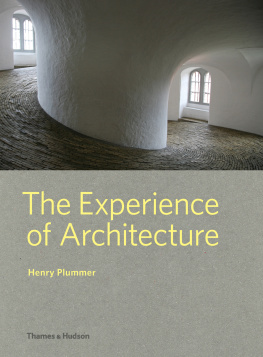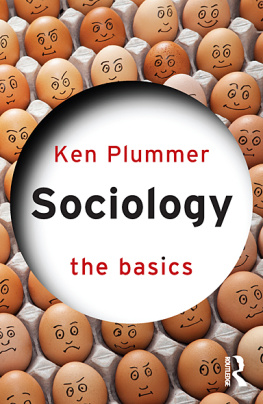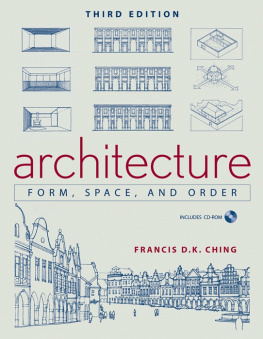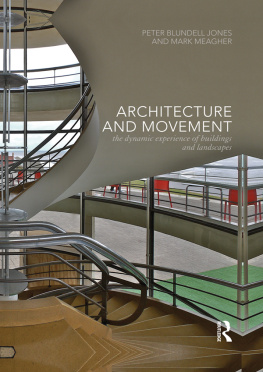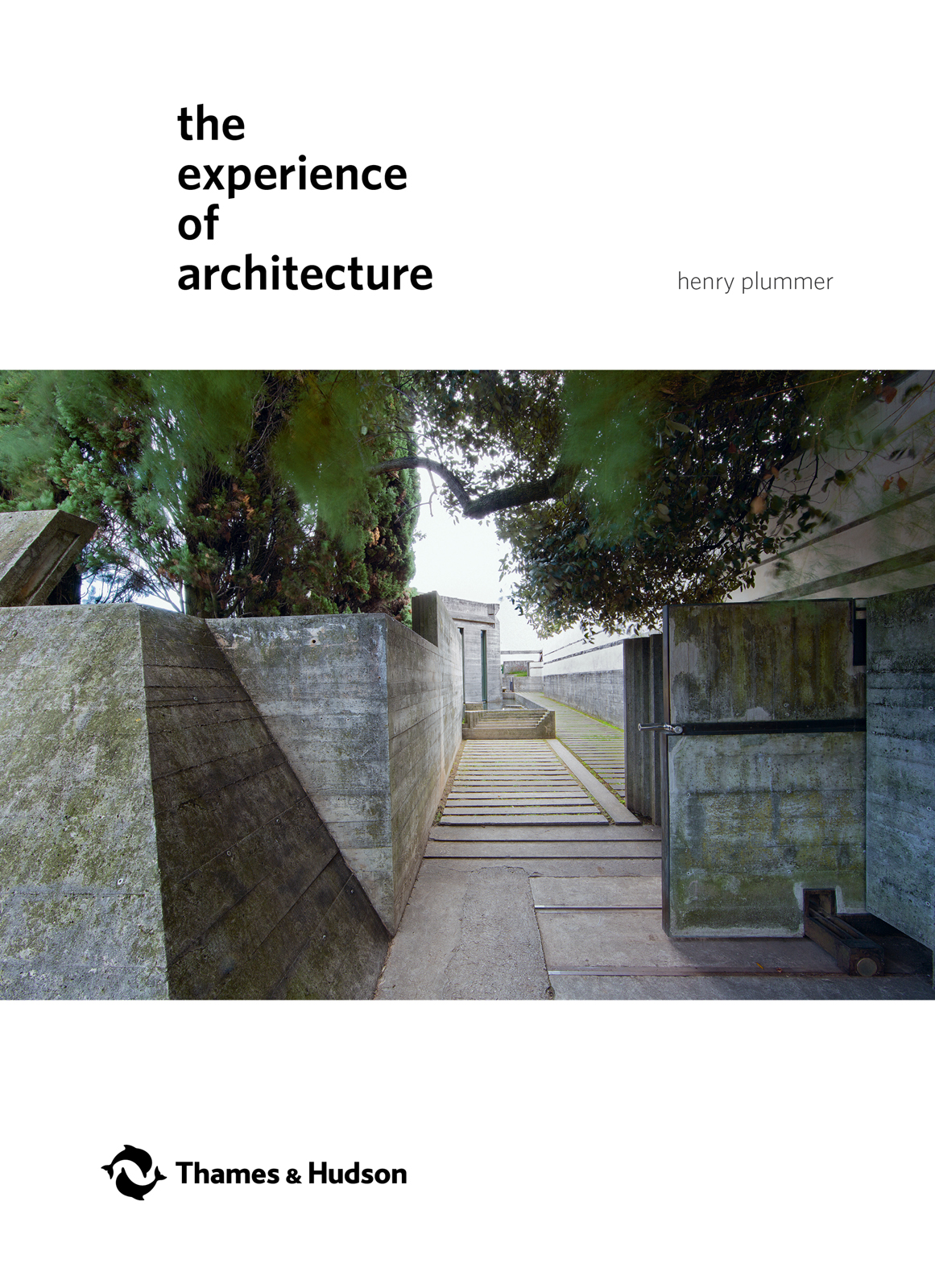
About the Author
Henry Plummer teaches architectural history and design at the Center for Advanced Study, University of Illinois. He received his MArch from MIT, studied light-art with Gyrgy Kepes and was a photographic apprentice to Minor White. He is the author of Nordic Light, also published by Thames & Hudson.
Other titles of interest published by
Thames & Hudson include:
Architects Sketchbooks
Educating Architects: How Tomorrows Practitioners Will Learn Today
Open Source Architecture
See our websites
www.thamesandhudson.com
www.thamesandhudsonusa.com
contents
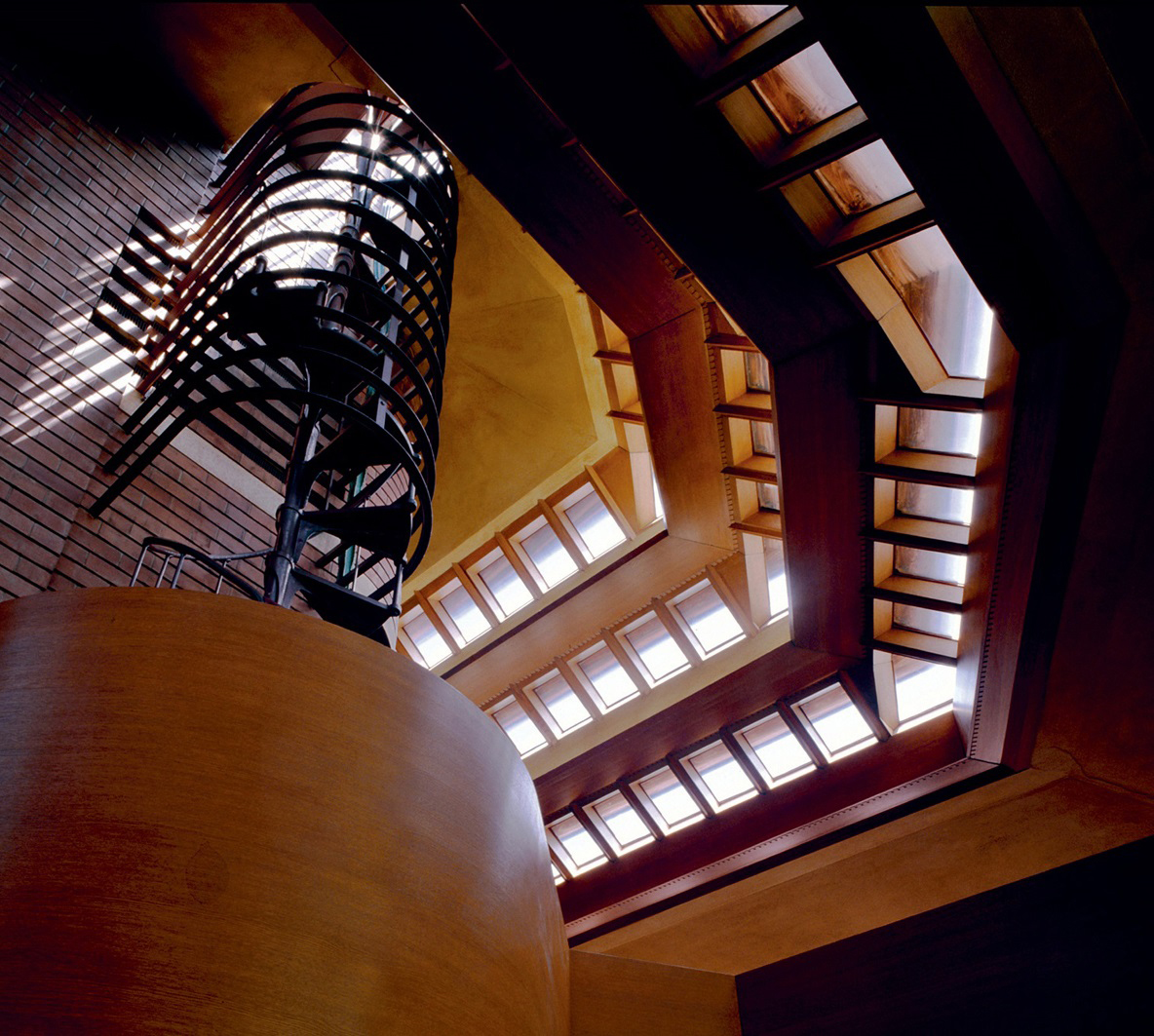
Frank Lloyd Wright, Wingspread (1937), Wisconsin, spiral stair climbing the chimney to a rooftop observation space
the risk and necessity of undetermined space
One of the most crucial if overlooked aspects of architecture is the capacity of buildings to either support or diminish the spontaneous powers of human beings to act in space. These acts take place whenever we have a chance to decide how we are going to occupy, move through or directly affect the place we are in. They originate in simple endeavours such as opening a door or closing a window, climbing a stair or crossing a bridge, changing level along a footpath or emerging in an urban square to find multiple routes and attractions ahead from which to choose. Regrettably, these countless undertakings have become so dull and uneventful that we barely notice them anymore.
There are times, however, when architecture elevates these customs to gratifying and exalting events, to true actions in the original sense of the word. Masses and cavities, floors and stairs, doors and windows draw us into a more consciously improvised kind of activity. In doing so, they call into play the underutilized gifts of our human agility and imagination, our motor impulses and sensory faculties, our powers to foresee and deliberate. We are invited to respond creatively to architecture, rather than react passively to its directives, transforming habits into deeds and promoting us from patients to agents. At these moments the act itself creates elation in the doing, intensifying our sense of existence.
This distinction is not merely philosophical, for spatial actions underlie some of our most cherished experiences. The verification of our own vital powers occurs, for instance, when climbing an unpredictable stair, bringing unaccustomed muscles into play and turning us into nimble, even acrobatic, forces. Or consider what happens when walking along a path that splits into alternate journeys: we are presented with more than one possible future and our capacity to venture in space is restored. We become causal forces, as well, when opening a door or swinging a shutter whose motion and effect is uncertain yet pleasing, suffusing their task with the freedom of play. Another modest example is found in a building endowed with secret depths we are able to discover, by simply opening a drawer or closet or climbing up to an attic or down to a cellar, peering into tiny architectural details to find something hidden within or probing through an episodic succession of rooms. In all these undertakings we are converted into protagonists in space: empowered to launch our own initiatives; cause effects; be doers of deeds in which we can shape our own immediate destiny.
At first glance, these unpretentious operations in buildings may seem so mundane they are of little consequence. But they are deeply significant insofar as they contribute to the sustenance of our being, rather than threaten us with non-being. They verify, essentially, that we are persons, not its. The daily exercise of free will in settings where there is more than just one possible outcome when negotiating a path or throwing open a window is a fundamental way that people are able to express their own essential powers and secure a sense of their own dignity and responsibility, reaffirming they have some influence over their own experience and fate. Everyone, from infants to the elderly, needs to know they are capable of being in control of themselves, and not always under the control of others.
Unfortunately, this kind of room to manoeuvre in sites of continual opportunity is disappearing from the modern world. Though once abundant in the natural landscape and in buildings, spaces open to human action are threatened by two opposing trends utilitarianism and spectatorism the former making buildings overly reductive and constraining, and the latter making them overly entertaining and theatrical. On the one hand our materialist culture is turning architecture into a commodity based on economy and easy production, which in turn standardizes our behaviour in space. On the other, our culture of amusement is converting buildings into seductive and highly marketable fabrications that captivate us with their novelty, but also reduce us to the passive audience of a prearranged visual spectacle. We forget that architecture is not merely an object to express personal or cultural values or satisfy a craving for fame. It is also the setting for what French philosopher When this liaison occurs, architecture is no longer something we ogle from a distance or exploit for practical need, but the catalyst for our very existence as living forces acting in concert with the world.
On the basis of everyday activities in space is built our immediate awareness of knowing we are intensely alive, sensing each time we are able to do something that makes a difference. Environments that nurture our creative use of these spatial powers allow us to both project and realize our bodily existence, instead of reducing us to just another item among the objects surrounding us. While the field of architecture has been rather oblivious to this reality, thinkers in neighbouring disciplines such as philosophy, poetry and psychology have reminded us repeatedly that everyday actions are how we restore and construct a sense of wellbeing, and it is only during this exercise of freedom that we are most truly ourselves.
Laying the groundwork for understanding what is at stake in our ability to choose among possible courses of action are the writings of those concerned with the loss of this power in contemporary culture, as well as the necessity and means of its recovery. Among them are poets such as William Carlos Williams and Charles Olson, philosophers Hannah Arendt, Michel Foucault and Daniel Dennett, the environmentalist and microbiologist Ren Dubos, and psychiatrists including Bruno Bettelheim, Erik Erikson, R.D. Laing and Erich Fromm. According to evolutionary biologists, our essential attributes as a species would have never evolved in the first place if the world of our ancestors was as monotonous and numbing as the architecture surrounding us now. Diverse stimuli and challenges were likely a crucial determinant of our biological endowment, for they kept Homo sapiens adaptable. A wide range of opportunities and risks are no less essential today, for they allow us, through our decisions, to give complete expression to our human potentialities.
The spontaneous powers that architecture is able to inspire in people prompting them to become what Laing calls the origin of actions in space is the subject of this book. While this topic is inherently slippery and almost indefinable, there can be no doubt about its significance. We need to better understand how buildings can nourish or shrivel the existence of people as vital forces able to choose their own courses of action, so that we might regain the skill to knowingly shape a more responsive, sustainable world. Fortunately, there is a long history of achievement in this regard to draw upon, in settings from the archaic to contemporary, both urban and rural, in historic monuments and anonymous folk buildings and villages.
Next page
